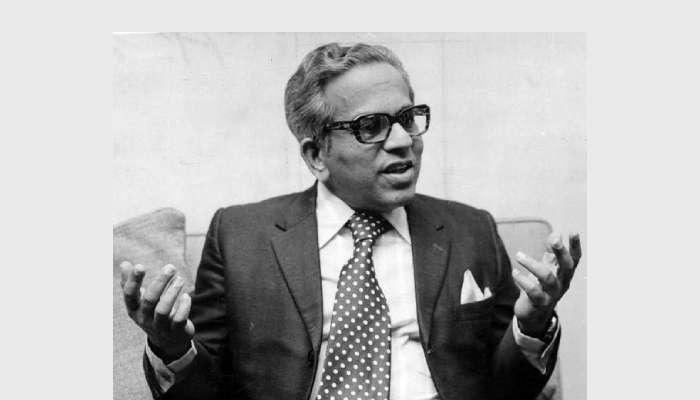
or

Yeshwant Vishnu Chandrachud born on 12 July 1920 was the 16th Chief Justice of India, serving from 22 February 1978 to the day he retired on 11 July 1985. Born in Pune in the state of Maharashtra, he was first appointed Judge to the Supreme Court of India on 28 August 1972 and is the longest-serving Chief Justice in India’s history at 7 years and 4 months. His nickname was Iron hands after his well-regarded unwillingness to let anything slip past him.
Justice Chandrachud was appointed Chief Justice of India during the term of the Janata government, under Prime Minister Morarji Desai. During his tenure as Chief Justice, he sent Sanjay Gandhi to jail in the “Kissa Kursi Ka” case. When Indira Gandhi’s Congress government came back to power a few years later, Chandrachud became a strong opponent of the government, and was known for staunchly defending the independence of the judiciary.
In one of the most notable cases in Indian constitutional history, during the Indian Emergency (1975-1977) of Indira Gandhi, a bench constituted of the five most senior judges of the Supreme court of India heard the famous Habeas Corpus case (A.D.M. Jabalpur vs. Shukla), where detenues under the restrictive Maintenance of Internal Security Act had argued that the Right to Life and Liberty (article 21 in the Indian constitution) could not be suspended even during periods of national emergency. The Indian constitution during that time itself provided that all fundamental rights, including the right to life under article 21 of the constitution, could be suspended during an Emergency. The Habeas Corpus majority decision therefore deferred to the original intent of the framers of India’s constitution. However, the Indira Gandhi government flagrantly misused their powers during the Emergency, and as a result, the doctrine of “original intent” has never taken a firm hold in India.
Despite widespread high court support for Habeas Corpus, Justice Chandrachud went along with Justices A.N. Ray, P.N. Bhagwati, and M.H. Beg, to reject this position, stating: in view of the Presidential Order dated 27 June 1975 no person has any locus to move any writ petition under Article 226 before a High Court for habeas corpus or any other writ or order or direction to challenge the legality of an order of detention. The only dissenting opinion was from Justice H. R. Khanna, who has been widely acclaimed for his dissent.
In the Minerva Mills case, the Supreme Court provided key clarifications on the interpretation of the basic structure doctrine. The court unanimously ruled that the power of the Parliament of India to amend the constitution is limited by the constitution. Hence the parliament cannot exercise this limited power to grant itself an unlimited power. In addition, a majority of the court also held that the parliament’s power to amend is not a power to destroy. Hence the parliament cannot emasculate the fundamental rights of individuals, including the right to liberty and equality.
In the Shah Bano case, the bench headed by Chief Justice Chandrachud, invoked a provision in The Criminal Procedure Code, 1973 to order maintenance compensation to the divorced Muslim woman.
This case caused the Rajiv Gandhi government, with its absolute majority, to pass the Muslim Women (Protection of Rights on Divorce) Act, 1986 which diluted the judgment of the Supreme Court.
Chandrachud was educated at Nutan Marathi Vidyalaya high school, Elphinstone College and the ILS Law College, Pune. Justice Y.V. Chandrachud died on 14 July 2008 shortly after he was admitted to the Bombay Hospital. He is survived by his wife Prabha, his son Dhananjaya Y. Chandrachud, current judge of Supreme Court of India and in line to become Chief Justice of India himself in 2022 and his daughter Nirmala. His grandson Chintan Chandrachud is a legal scholar and writer.
The LW Bureau is a seasoned mix of legal correspondents, authors and analysts who bring together a very well researched set of articles for your mighty readership. These articles are not necessarily the views of the Bureau itself but prove to be thought provoking and lead to discussions amongst all of us. Have an interesting read through.

Lex Witness Bureau

Lex Witness Bureau

Lex Witness Bureau

For over 10 years, since its inception in 2009 as a monthly, Lex Witness has become India’s most credible platform for the legal luminaries to opine, comment and share their views. more...
Connect Us:


The Grand Masters - A Corporate Counsel Legal Best Practices Summit Series
www.grandmasters.in | 8 Years & Counting
The Real Estate & Construction Legal Summit
www.rcls.in | 8 Years & Counting
The Information Technology Legal Summit
www.itlegalsummit.com | 8 Years & Counting
The Banking & Finance Legal Summit
www.bfls.in | 8 Years & Counting
The Media, Advertising and Entertainment Legal Summit
www.maels.in | 8 Years & Counting
The Pharma Legal & Compliance Summit
www.plcs.co.in | 8 Years & Counting
We at Lex Witness strategically assist firms in reaching out to the relevant audience sets through various knowledge sharing initiatives. Here are some more info decks for you to know us better.
Copyright © 2020 Lex Witness - India's 1st Magazine on Legal & Corporate Affairs Rights of Admission Reserved